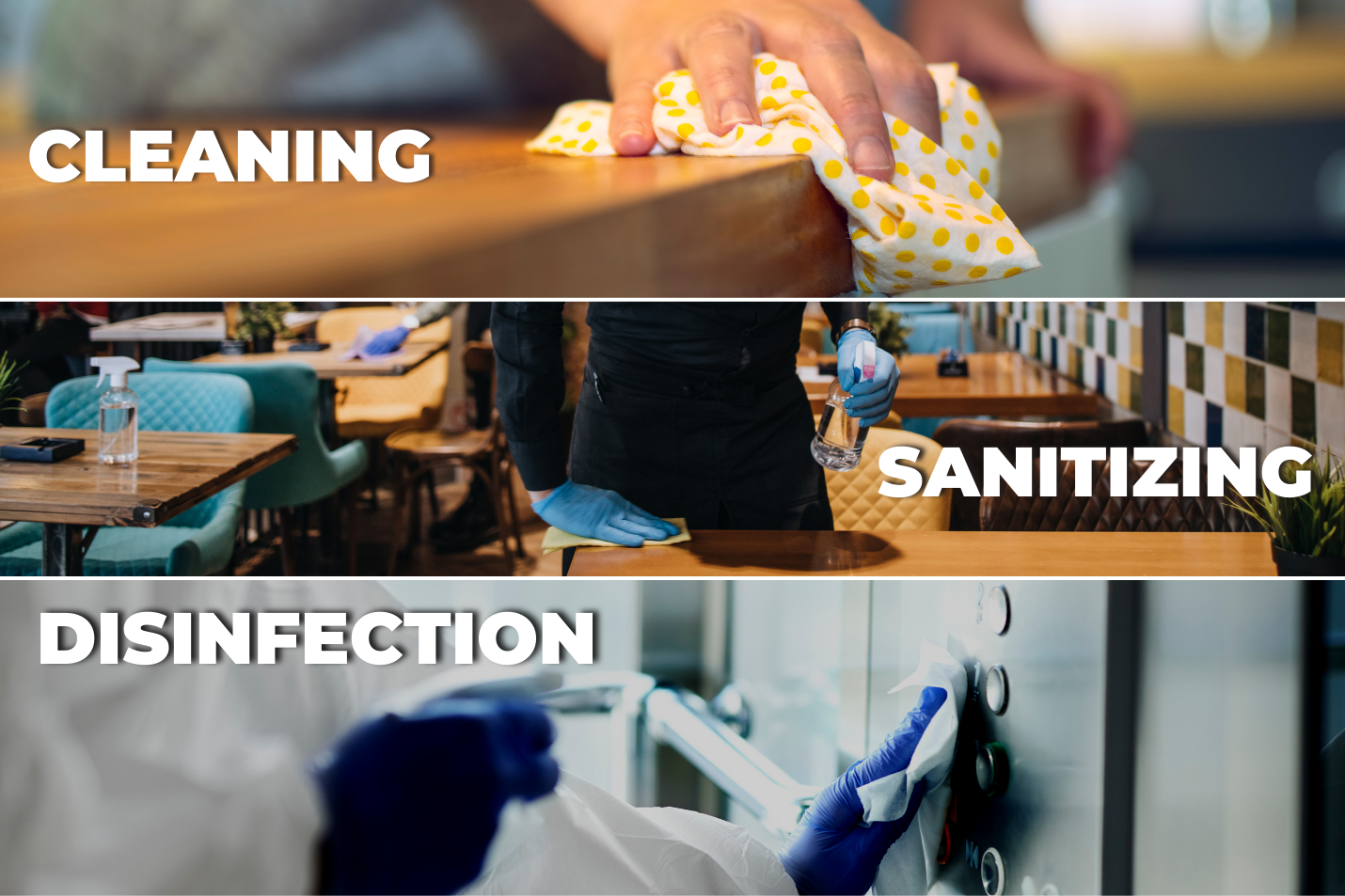Do Restauranteers understand the difference between Cleaning, Sanitizing, and Disinfection?
It’s no secret how the hospitality and F&B industry has suffered during the Covid-19 pandemic. I remember how we used to discuss that every sector can go for a toss, but the food business is something that will always flourish – something put into question in the last few months!
This too shall pass! We are observing a trend of people and businesses readying themselves to open up gradually and cautiously. While there should be no doubt on the ‘being cautious’ spirit of these institutes, especially of the restaurants that are resuming service with great caution, the question here is about the AWARENESS.
Are we completely aware of the What & How of things?
We’ll reserve this topic space for a very crucial awareness aspect that is generally confused – the difference between cleaning, sanitizing, and disinfection!
▪ Cleaning
Cleaning should not be a new term for us. We’ve been doing that daily in our homes and
workplaces. It refers to physically cleaning surfaces to get rid of dust, dirt, and stains.
From a personal aspect, it means cleaning our body (once or twice a day) and hands
using soap and water. This is a basic and preliminary aspect of hygiene and maintenance
of us and our places. It is also advisable to clean a surface prior to its sanitization or
disinfection for effectiveness.
Sanitization is a preventative measure that follows the cleaning. It reduces the number
of pathogens and inhibits their growth on a surface. Please note that the sanitizers do
not kill all the viruses. However, they lessen their numbers and can be used multiple
times a day. As per the Environmental Protection Agency (EPA), “sanitization is to
reduce, but not necessarily eliminate, microorganisms from the inanimate environment
to levels considered safe as determined by public health codes or regulations.” The food-
safe sanitizers can be safely used in kitchens, cooking utensils, and food items. Cleaning
a surface before sanitization ensures more efficacy; however, people also use sanitizers
when soap and water are not available, and they need to decontaminate themselves in
dire situations.
Disinfecting is the killing of harmful microorganisms, including viruses and bacteria. It is
recognized as the most effective way of killing viruses, which includes the coronavirus,
by the EPA. Disinfectants successfully destroy pathogens on hard, non-porous surfaces.
Hence, it becomes imperative to disinfect, especially the high-touch surfaces like doorknobs, outside of refrigerators, switches, chairs, tables, cupboards, toilets, sinks, bathroom surfaces, etc. Disinfection is not entirely effective on an unclean surface.
In a nutshell, for a food business to attract footfall during the current times, a simple formula can do wonders. First, clean the entire place once you open up daily. Once done, ensure disinfecting the entire place while sanitizing the surfaces and hands of the staff from time to time during the day. Please ensure the cleaning and disinfecting staff uses appropriate gloves and other recommended personal protective equipment (PPE) during the operation. It would be a good option to make an effective sanitizer available for the customers at the entry and exit points.
Before ending, a few critical points one might take care of while investing in the disinfection process.
- Choose from the list of approved disinfectants released by the EPA for the use against coronavirus. It would also help to go through the EPA’s List N for detailed information on the types of surfaces to be disinfected. Both lists combined provide an exhaustive study on the proper application of disinfectants.
- Check the effectiveness of the disinfectant.
- Examine the post-disinfection effects – trying using a disinfectant with no or minimum side effects.
- Go for the disinfectants recommended for foodservice facilities. This is specifically critical for food businesses. These disinfectants should be rated “no-rinse,” i.e., there shouldn’t be a need to rinse the surface with water after its application.
- Wash your hands after applying the disinfectant.
- Read the instructions on the bottle or can of the disinfectant to make sure the instructions are followed cautiously.
Sterloc is one such all-natural disinfectant that meets all these requirements and helps you mold seamlessly into the #newnormal.
Let’s get started and welcome our customers to a safe environment. #StayDisinfectedStaySafe!
Avani Raj Arora

13 thoughts on “Do Restauranteers understand the difference between Cleaning, Sanitizing, and Disinfection?”
I noticed something too about this topic on another blog.Amazingly, your linear perspective onto it is diametrically opposite to what I just read before. May I post part of this on my page if I post a mention of the this site?
Can I just say what a relief to discover a person that genuinely understands what they are discussing on the net. You certainly realize how to bring an issue to light and make it important. More and more people ought to look at this and understand this side of the story. It’s surprising you are not more popular because you certainly possess the gift.
🙂 👍 Thank you!!
After looking at a few of the articles on your web site, I truly appreciate your way of blogging. I saved it to my bookmark website list and will be checking back in the near future. Take a look at my web site as well and tell me what you think.
Thanks designed for sharing such a nice thinking, paragraph is good, thats why i have read it fully|
Thank you so much!
This is one awesome blog post. Great.
🙂 Guess you are a foodie? 😉
I know this website presents quality depending posts and additional material, is there any other site which gives these kinds of stuff in quality?|